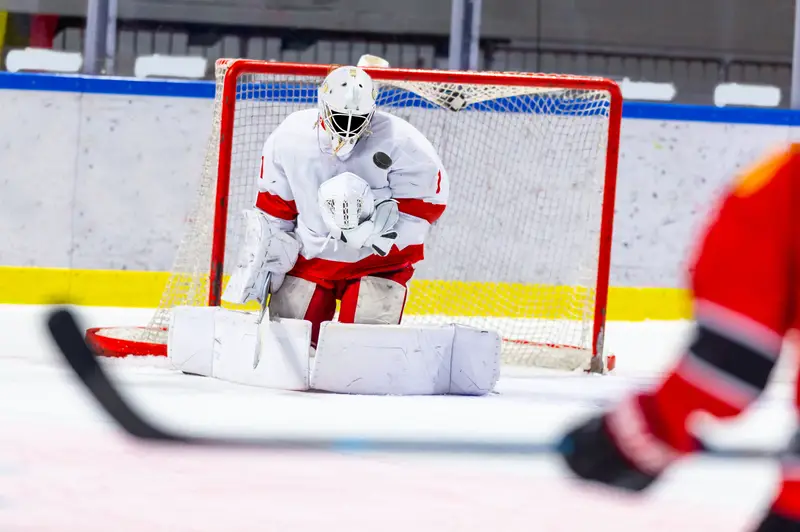A 64-year-old amateur hockey goalie passed away on Tuesday night, March 25, after being hit in the chest by a puck during a beer league game in Jacksonville, Florida.
Louis Foster, a grandfather and father of two, was competing for the Kraken Beers team at the Community First Igloo rink. A player from the Fireballs team struck him with a shot around 10:40 p.m., as reported by the Jacksonville Sheriff’s Office.
After the impact, Foster informed teammates he felt unwell and exited the game. Witnesses stated he collapsed near the stands while still wearing his goalie gear.
Bystanders promptly administered CPR to Foster until emergency responders arrived. The Community First Igloo staff quickly notified 911 and utilized an automated external defibrillator (AED) available on-site.
Foster was taken to Baptist Medical Center, where he later succumbed to cardiac arrest. Family members present at the game noted that Foster had no known pre-existing medical conditions.
Jerry Stevens, district sports medicine supervisor for Duval County, noted the puck impact could have induced a rare condition termed commotio cordis.
“What happens is, that object hits the chest at the perfect time, disrupts the normal rhythm of the heart, so the heart stops,” he informed First Coast News.
The Cleveland Clinic reports that commotio cordis is most prevalent in sports featuring hard objects like baseballs, lacrosse balls, and hockey pucks.
The condition is particularly lethal because the impact must occur at a precise moment in the heart’s rhythm cycle — during ventricular relaxation. The National Commotio Cordis Registry has recorded over 220 sudden deaths from this condition since 1996.
While typically more common in young athletes with an average age of 15, commotio cordis can also affect adults under specific conditions. The puck must strike the chest at a perpendicular angle with enough force to cause the arrhythmia.
Foster, a resident of Gainesville, Florida, was regarded by acquaintances as a “bright spirit and true lover of the sport.” “We’re a very tight-knit hockey community. I may not have known him personally, but we’re all in this great game together,” commented Alex Reed, Director of Communications for Jacksonville Icemen and Community First Igloo.
The Jacksonville Sheriff’s Office has labeled Foster’s death as “undetermined” pending autopsy results, though the circumstances indicate commotio cordis as the likely cause.
Medical professionals underscore the importance of immediate recognition and rapid response for commotio cordis survival. Quick CPR and early defibrillation offer the best chance for recovery from this rare but potentially fatal condition.
This incident emphasizes the necessity of having AEDs accessible at sports venues. The Community First Igloo had AEDs on site, and the staff were trained in their use, aligning with best practices for sports facilities.
Foster’s situation resembles other occurrences in hockey history. NHL defenseman Chris Pronger experienced a similar event in 1998 when a slap shot hit his chest during a game against Detroit. Unlike Foster, Pronger recovered and played in the subsequent game.
Hockey goalies frequently face high-velocity shots, often surpassing 70 miles per hour in amateur leagues and exceeding 100 miles per hour in professional play. Despite wearing chest protectors designed to absorb impact, the pads cannot always prevent commotio cordis if the puck strikes during a critical moment in the cardiac cycle.
Foster’s family and friends have paid homage to him, noting his dedication to improving the lives of those around him.
The adult hockey league at Community First Igloo brings together players of varying skill levels and ages who share a passion for the sport. These “beer leagues” provide recreational competition for adults who enjoy playing hockey but are not professionals.
The Community First Igloo group was significantly impacted by the loss and has conveyed condolences to the family. They are collaborating with local authorities as they investigate the incident. Though such fatalities are rare in hockey, they serve as a reminder of the inherent risks in sports involving high-speed projectiles.











